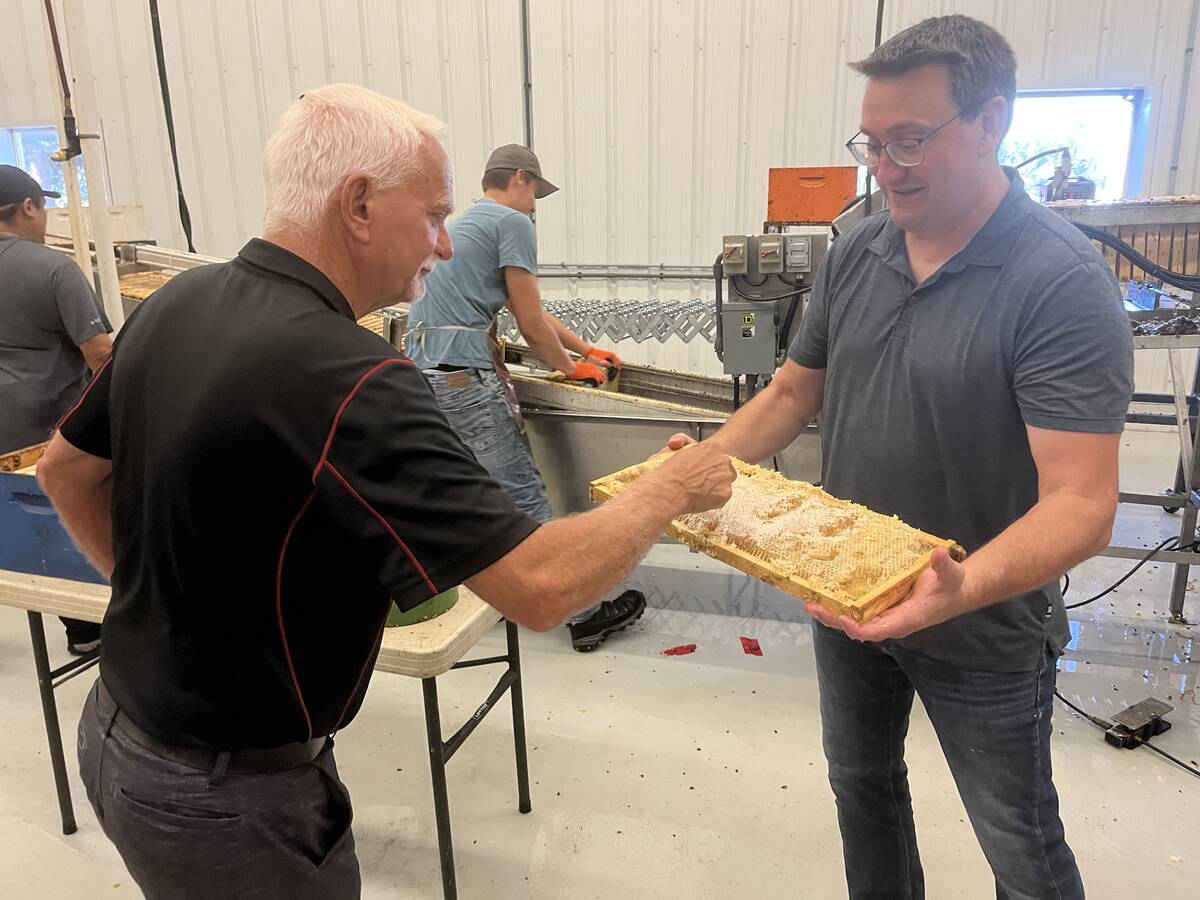Saskatchewan’s rural firefighters may have to change their communication and dispatch system four years after being ordered to invest thousands of dollars in another technology.
A committee comprising SaskTel and the provincial government is investigating new technologies that volunteer firefighters can use. Now, most of the province’s rural volunteer fire departments use Fleetnet communication, which dispatches them to fires and rescue calls within their area.
Lyle White of the volunteer department in Smeaton, Sask., said all departments had to switch to Fleetnet two years ago.
Read Also

Alberta honey business ‘thrives’ despite bumpy beginnings
Thrive Honey showcases its honey production in market where Alberta produces 40 per cent of all honey produced in the country
“I really like it but there are places in the province where it doesn’t work.”
However, White is concerned about convincing the rural municipalities that fund his department to pay for more communication equipment again.
Michelle Englat of SaskTel corporate affairs understood the concern.
“We realize that some people have invested in the Fleetnet but the current technology is an aging one and may not be effective any more.”
She said the committee anticipates ending Fleetnet’s use by dispatch firefighters as of December 2006. Englat said cost is one factor. While the group has not yet recommended a change, Englat said it is looking at wireless technologies and a “push-to-talk solution.”
White said he was worried the change would happen in 2005 but was relieved to hear the departments have another two years before switching systems. He said his department averages 20 calls a year but that will increase because the Smeaton department just raised money to buy a Jaws of Life for vehicle accident rescues.
Bill Hengstler, chief of the volunteer fire department in Lestock, Sask., has heard the Fleetnet service would be turned off on Dec. 31, 2006.
“When 911 came in, Fleetnet was not a favourite of small towns because it was expensive. We questioned them (SaskTel) to no end about it and they said they would keep it. They provided it for two years and now they want to replace it.”
Hengstler said it is ironic that he was advocating a push-to-talk system with cell phones as a cheaper alternative to Fleetnet and that seems to be what SaskTel is returning to, even though cell phones don’t cover all rural areas.
Fleetnet costs the 14-member Lestock department about $100 a month, plus the initial cost to set up. He said volunteers answered 22 fires and three rescue calls this year, operating on a $10,000 budget.
















